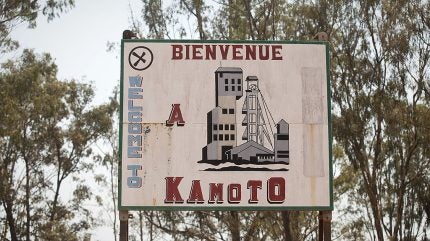Support CleanTechnica’s work through a Substack subscription or on Stripe.
The Hell’s Kitchen project in Imperial County, California, has attracted attention because it brings together two ambitions in one place. Controlled Thermal Resources is building a facility that would generate geothermal electricity while also extracting lithium from the same brine. The plan is to deliver 25,000 tons per year of battery-grade lithium hydroxide monohydrate and around 50 MW of electricity in its first stage.
I’m looking at it because an international contact asked me if I had an opinion and I was curious. It’s intersectional with two areas I’ve been doing a lot more analysis and work in, geothermal with my series on that subject (series wrap-up article), and critical minerals, where I’ve been doing a lot of work recently (global institutional investor presentation). More on that once the sea bed mining report I recently collaborated on is published.
On paper, the numbers look promising and the project sits at the heart of the Salton Sea geothermal field, one of the few places in the United States with both the heat and the mineral content required for this model. The project has been given special permitting status under federal programs and has already secured investment and off-take agreements with large automakers.

The Salton Sea is a large, shallow lake in California’s Imperial Valley that was created by accident in 1905 when the Colorado River broke through irrigation canals and flooded a dry desert basin. Over time it became a mix of recreational resort, agricultural sump, and ecological challenge as salt and agricultural runoff accumulated, making the water increasingly inhospitable to fish and birds. The shrinking shoreline has left exposed playa that generates dust and air quality problems for nearby communities. Along its edges unusual settlements have taken root, including Slab City, an off-grid community of squatters, artists, and drifters living on the remains of a former military base. The mix of ecological decline, improvised human habitation, and potential mineral wealth makes the Salton Sea a place unlike anywhere else in the United States.
The Salton Sea brines are unusual too. They are hot, with high concentrations of dissolved salts and trace metals, including lithium. Concentrations in the brines are usually reported in the range of 150 to 250 milligrams per liter. That may sound small, but the volumes of brine involved are massive and the value of lithium is high. At the same time, these brines are difficult to handle. They carry silica and boron which can clog pipes and foul surfaces. They are corrosive to steel and other alloys. The engineering challenge has always been how to get energy and minerals out of the brine in a way that is reliable and cost effective.
Controlled Thermal Resources is betting on direct lithium extraction, a process that relies on selective adsorption and ion exchange. In simple terms, the brine flows through a material that has sites that bind lithium ions more strongly than other ions like sodium or magnesium. The brine is then flushed out, leaving lithium attached to the sorbent. A rinse step releases lithium into a concentrated solution that can be processed into lithium hydroxide. The company reports that its pilot system has achieved 95 to 97% recovery at one-tenth of commercial scale. After this step, the solution is refined through membrane filtration, evaporation and crystallization in partnership with Aquatech to produce battery-grade lithium hydroxide monohydrate.
The attraction of direct lithium extraction is clear. Unlike open pit mining or large evaporation ponds, it is fast and takes up little surface land. The cooled brine is re-injected underground, which avoids evaporation losses and reduces environmental impact. The geothermal resource also provides the electricity and heat to run the process, making it more integrated than most lithium projects. The problem is that direct lithium extraction has not yet been proven at full commercial scale on geothermal brines. Sorbent materials can degrade under continuous exposure. Flow systems can clog with silica. Even if recovery rates are high in a pilot system, keeping them high for years at full throughput is unproven.
The economics look solid if the system works as intended (and my quick napkin math didn’t slip any digits). At lithium hydroxide prices in the range of $15,000 to $25,000 per ton, 25,000 tons per year would bring in $375 million to $625 million. The 50 MW of power adds another $22 million to $31 million at wholesale prices of $50 to $70 per MWh. That means Stage 1 could generate between $400 million and $650 million per year in revenue. The brine flows needed for 50 MW of electricity are already large enough to contain the lithium needed for 25,000 tons of output, so the two processes are well matched. If the plant runs steadily, the energy needed for pumping and processing is only a few megawatts, leaving most of the power available for sale.
In terms of scale, 25,000 tons of lithium hydroxide equates to about 4,100 tons of lithium metal each year. At about 0.12 kg of lithium per kWh in a typical battery, that amount supports roughly 34 GWh of battery capacity. With packs averaging 60 to 75 kWh, the output from Stage 1 is enough for about half a million electric vehicles each year. Compared to current US battery demand of about 200 GWh per year, that is around 17%. Compared to projected (but at risk) demand of about 1,000 GWh by 2030, it is only about 3% to 4%. The project would make a meaningful contribution today, but would be only one part of the supply chain by the end of the decade.
The scale of brine needed to run the Hell’s Kitchen project is hard to picture, but some comparisons help. About 70 million cubic meters a year is equal to filling roughly 28,000 Olympic swimming pools. It matches the annual water use of more than 230,000 US households. It would also take about 2.3 million highway tanker trucks to carry the same amount. These images bring home how much fluid must be moved and managed continuously to generate geothermal power and extract lithium from the Salton Sea brines.
Stellantis has taken a prominent role in supporting Controlled Thermal Resources by investing over $100 million in the Hell’s Kitchen project and signing a long term supply agreement for up to 65,000 tons of lithium hydroxide per year, assuming more phases come online. For Stellantis, the investment is strategic, securing a domestic and lower carbon source of a critical battery material needed for its electric vehicle transition.
The arrangement gives CTR a strong off-take partner and credibility with financiers, but it also ties part of the project’s future to Stellantis’ financial health. With the automaker facing tariff pressures, a recent net loss, and suspended earnings guidance, there is a degree of uncertainty about its ability to sustain all of its commitments. While Stellantis has significant liquidity and remains one of the largest global carmakers, its current fiscal stress adds a layer of risk for CTR if delays, restructuring, or market conditions limit Stellantis’ appetite for capital intensive supply chain ventures.
Policy has played an important role. The Inflation Reduction Act gave strong incentives for critical mineral processing and for clean electricity. Controlled Thermal Resources expected to benefit from both. The Trump administration in 2025 froze many program funds and Congress passed the One Big Beautiful Bill in July which reshaped the incentives. Critical mineral and advanced manufacturing credits remain available, which covers lithium refining. Clean electricity credits are now restricted, with earlier deadlines and stricter requirements. That means the geothermal side of the project may receive less support than originally planned. In addition, domestic content rules have tightened, making compliance more difficult.
There are risks beyond the technology and the policy environment. Lithium prices have swung sharply, from a boom in 2022 to a deep drop in 2024. The economics of any lithium project depend heavily on future prices. Competition is another risk. Other firms are working on direct lithium extraction with different chemistries and methods. If one of them scales faster and cheaper, Controlled Thermal Resources could lose its first mover advantage.
The Hell’s Kitchen project has not moved forward without opposition. Environmental groups raised concerns about potential impacts on air quality, water resources, and the fragile ecosystem around the Salton Sea. A coalition filed lawsuits in Imperial County arguing that the environmental review underestimated risks and failed to account for long term impacts of large scale brine handling and re-injection. In early 2025, a county judge dismissed the case, finding that the review process had met legal standards. The decision cleared the way for construction to proceed, although the protests and legal challenges underscored the tension between urgent demand for critical minerals and the concerns of local communities and environmental advocates.
The case for the project is still strong from a strategic point of view. The United States needs domestic sources of battery materials if it is to meet electric vehicle and energy storage demand without being entirely dependent on imports. Lithium from geothermal brines would have a lower carbon footprint and less environmental impact than hard rock mining. The economic impact on Imperial Valley could also be important, bringing jobs and new tax revenue to a region that has struggled for decades. If Hell’s Kitchen succeeds, it will provide a model for other brine resources around the world.
It is fair to be cautious. The project pencils out well on spreadsheets, but it faces technical risks in proving that direct lithium extraction works at scale, economic risks in volatile lithium markets, and policy risks from changing federal incentives. If it succeeds, it will reshape how the world thinks about geothermal brines. If it stumbles, it will reinforce how hard it is to turn promising pilot technologies into industrial reality. The project deserves attention because it brings together geology, chemistry, engineering, and policy in a way that shows both the promise and the difficulty of building the next generation of clean energy supply chains.
Sign up for CleanTechnica’s Weekly Substack for Zach and Scott’s in-depth analyses and high level summaries, sign up for our daily newsletter, and follow us on Google News!
Have a tip for CleanTechnica? Want to advertise? Want to suggest a guest for our CleanTech Talk podcast? Contact us here.
Sign up for our daily newsletter for 15 new cleantech stories a day. Or sign up for our weekly one on top stories of the week if daily is too frequent.
CleanTechnica uses affiliate links. See our policy here.
CleanTechnica’s Comment Policy




